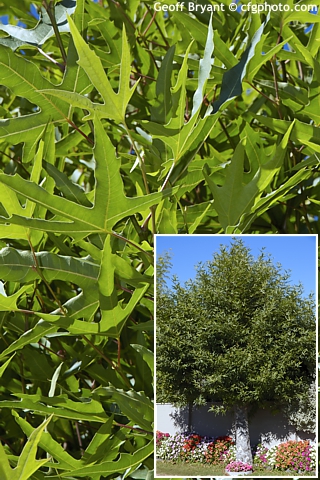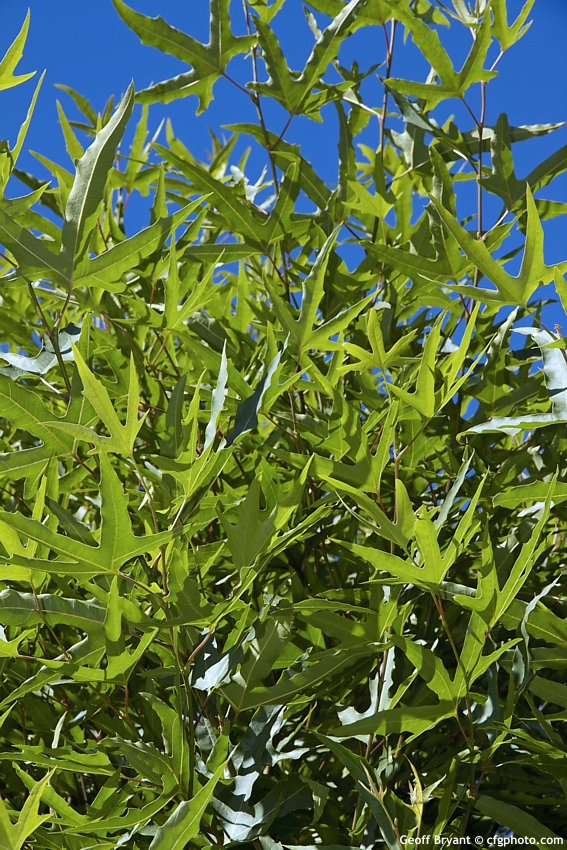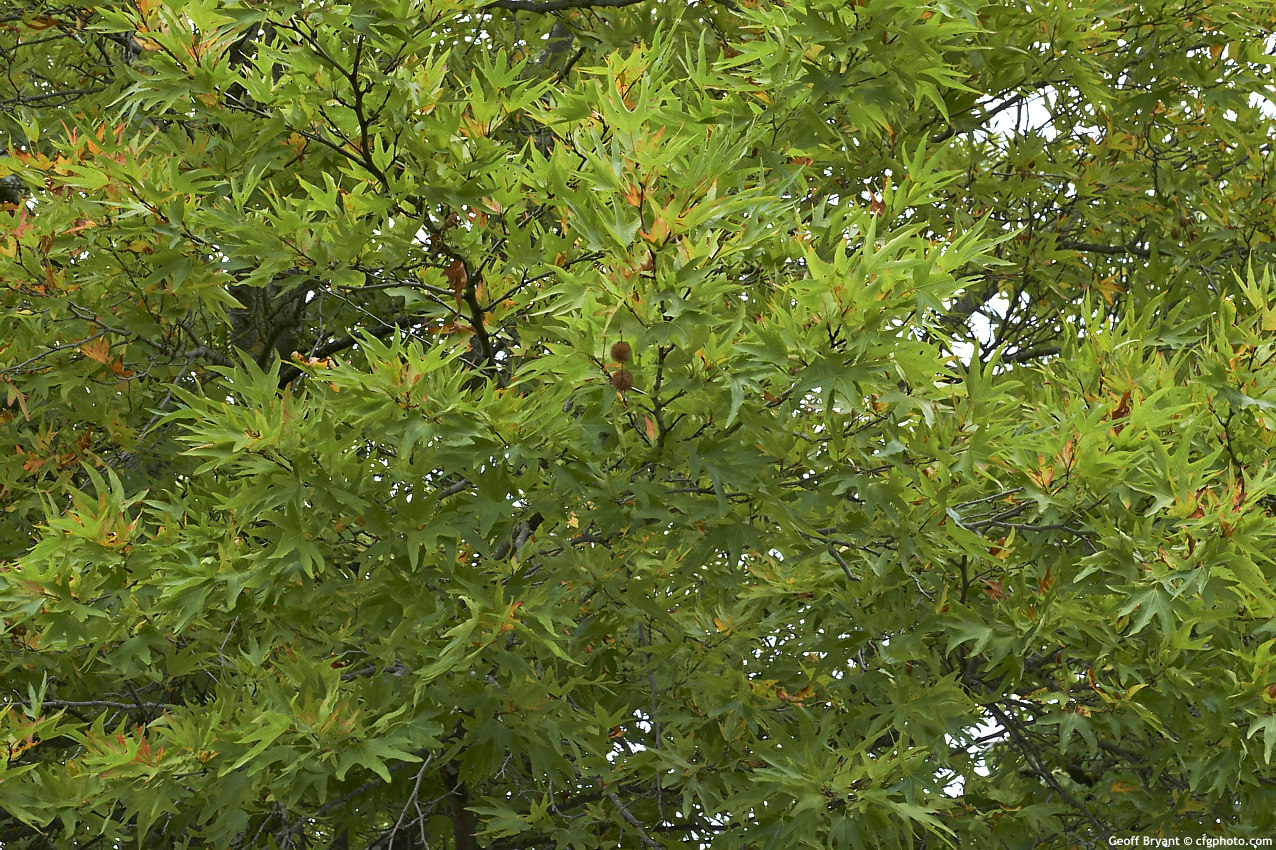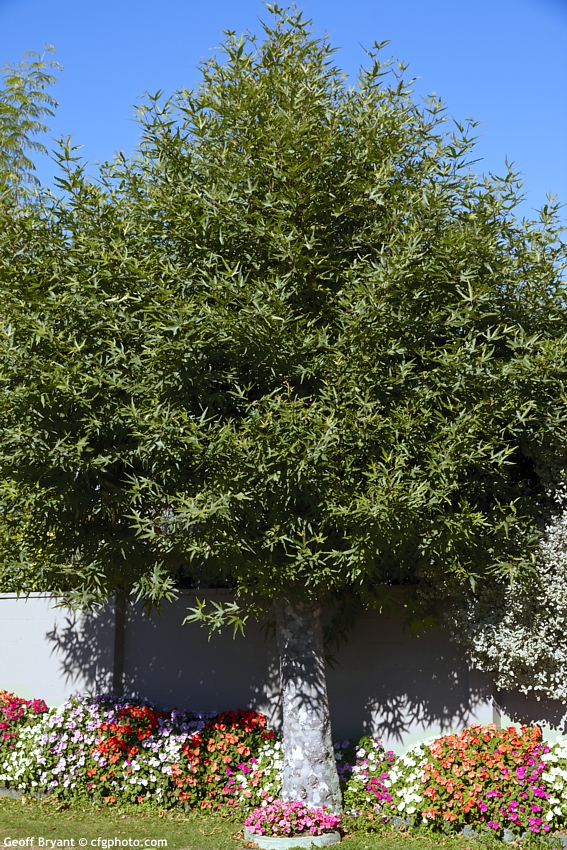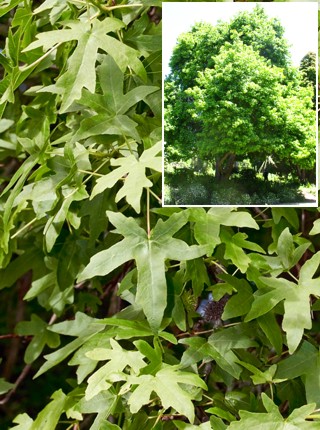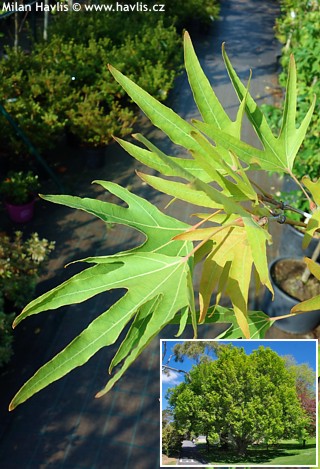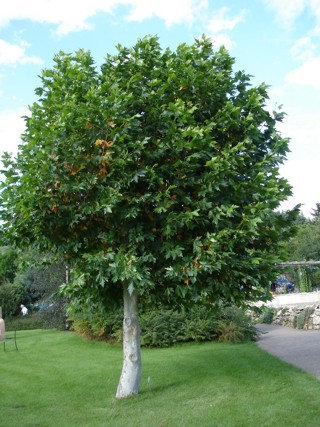Platanus orientalis 'DIGITATA' oriental plane


Platanus
Oriental plane is native to S.E.Europe where its large canopy is sought-after for a good and day-long shade. In ancient Greece Hippocrates, the father of medicine is said to have given his lectures of philosophy sitting under these magnificent trees, and students kept listening undisturbed by hot rays of sun. In other parts of the world including Northern hemisphere the plane did not become widely cultivated possibly because of its large size and resemblance to sweetgums which are much smaller and therefore more suitable for small and mid-sized gardens. In spite of its size we believe that it has features of ornamental value for which it finds its use in our climate, too.Digitata is very similar to Laciniata variety but there a few differences. Its leaves are 15-20 long and wide (Laciniata is longer), deeply lobed with conspicuous side horns at margins (Laciniata has smooth margins), medium do dark green (Laciniata is paler). They are deciduous, matte, and turn yellow, orange or even scarlet shades for a short period of time in autumn. They are covered with tiny hairs that may irritate respiratory system if worked with closer to the face and in large quantity.
Smooth trunk exhibits attractive multi-coloured pattern revealed by bark that peels off in irregularly shaped flakes on older trees. Fruits are rather small, 1-1,5 cm across, olive green, infertile, slightly prickly spheres (achenes) in hanging clusters of 2-4 that remain on the tree during the winter. The tree grows fast and well-established young trees can make half a meter per year. The canopy is upright to rounded or dome-shaped with age, casting a pleasant shade. Despite its large size it always looks delicate thanks to its dissected foliage.
It adapts to any soil type, but prefers deep, moist, siliceous soil. It tolerates air-pollution, summer dry spells as well as temporary flooding once established. Pruning should be done by end winter. In small gardens and narrow streets you can use pollarding to keep it smaller. It is a form of pruning when at the end of winter you cut back the branches right to the top of the stem, let them re-grow in spring, making long branches with extremely large leaves. Such action must be repeated annually or every couple of years. Hardiness of oriental plane is a conflicting subject when it comes to encyclopedias from all over the world. However, we have tested and proved its hardiness down to min. -25°C (USDA zone 6) without any damage and suppose it can withstand a couple of degrees lower for a few days.
Last update 02-12-2021
Goods are shipped all over Europe. For Russia and U.K. and for further details please read about SHIPPING OPTIONS HERE.
Are you interested in a serious discount for orders NOV-FEB? Check your options here.
THE PRICES INCLUDE VAT of 15%. For quick conversion you can use 1 CZK = approx. 0.04 EUR
- STANDARD QUALITY - Plants of this group are 1st class quality with number of branches and overall density adequate to their size and age, considering they were container grown.
- DE LUXE QUALITY - This label guarantees a luxurious quality of manually selected plants that, compared to their height and age, are exceptionally dense and beautiful.
- EXTRA - These plants are usually mature and bigger specimens with exceptional overall appearance.
- STANDARD (as described in the plant form) means a tree with a trunk of 190-210 cm and a crown at the top, unless specified differently. The commercial size for trees is their girth measured in the height of 1m from ground.
- HOBBY - These plants are of the same quality as our standard-quality plants but younger and therefore cheaper.
- SHRUB - a woody plant with branches growing bushy from the ground level.
- HALF-STANDARD or MINI-STANDARD - a small tree with shorter trunk, its size is usually specified.
- FEATHERED - These are trees with branches growing already from the base of the trunk and up along the stem.
- GRASSES and PERENNIALS - Sizes given usually read the diameter of the pot or the clump, as specified.












